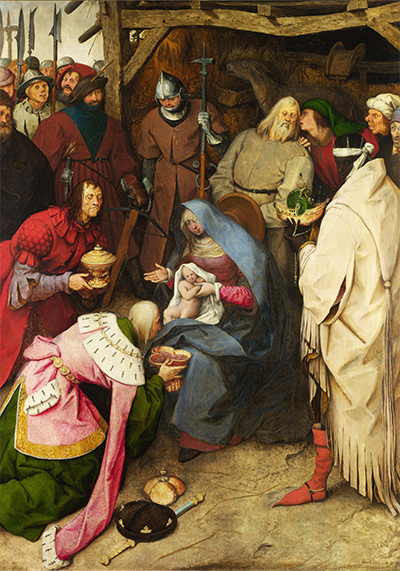 Buy Art Prints Now
Buy Art Prints Nowfrom Amazon
* As an Amazon Associate, and partner with Google Adsense and Ezoic, I earn from qualifying purchases.
The Adoration of the Kings, by Flemish painter Pieter Bruegel the Elder, is on permanent display at the National Gallery in Trafalgar Square, London.
It is certain that the oil painting dates from 1564 since the artist himself has signed and dated his work.
Bruegel was best known for his depictions of peasant life in the 16th century and his style was greatly influenced by Hieronymus Bosch.
The painter captures the scene of the three Kings or Magi paying their homage to the baby Jesus and presenting the traditional gifts of gold, frankincense and myrrh.
However this painting is very different in feeling from previous adoration paintings in the way it depicts the central characters. Unlike other nativity scenes the focus is not on the baby but on the behaviour of the crowd of citizens and soldiers looking on.
The spectator's eye is continually drawn to the individual characters as we read the painting.
The feeling is therefore secular rather than religious. The Virgin Mary takes centre stage, holding the infant Jesus on her lap, although her face is half hidden from sight.
However the father Joseph appears distracted from the events happening around him, listening instead to an anonymous peasant who appears to be whispering a message in his ear.
The Adoration of the Kings is full of casual, everyday features that encourage the viewer to approach the scene with a new perspective and challenges assumptions by making the familiar and ordinary seem more striking than usual.
The spectator no longer takes the scene before him or her for granted, but views it through new and questioning eyes. Bruegel emphasises the humanity of these familiar characters and poses questions for his spectators about their individual religious beliefs.




